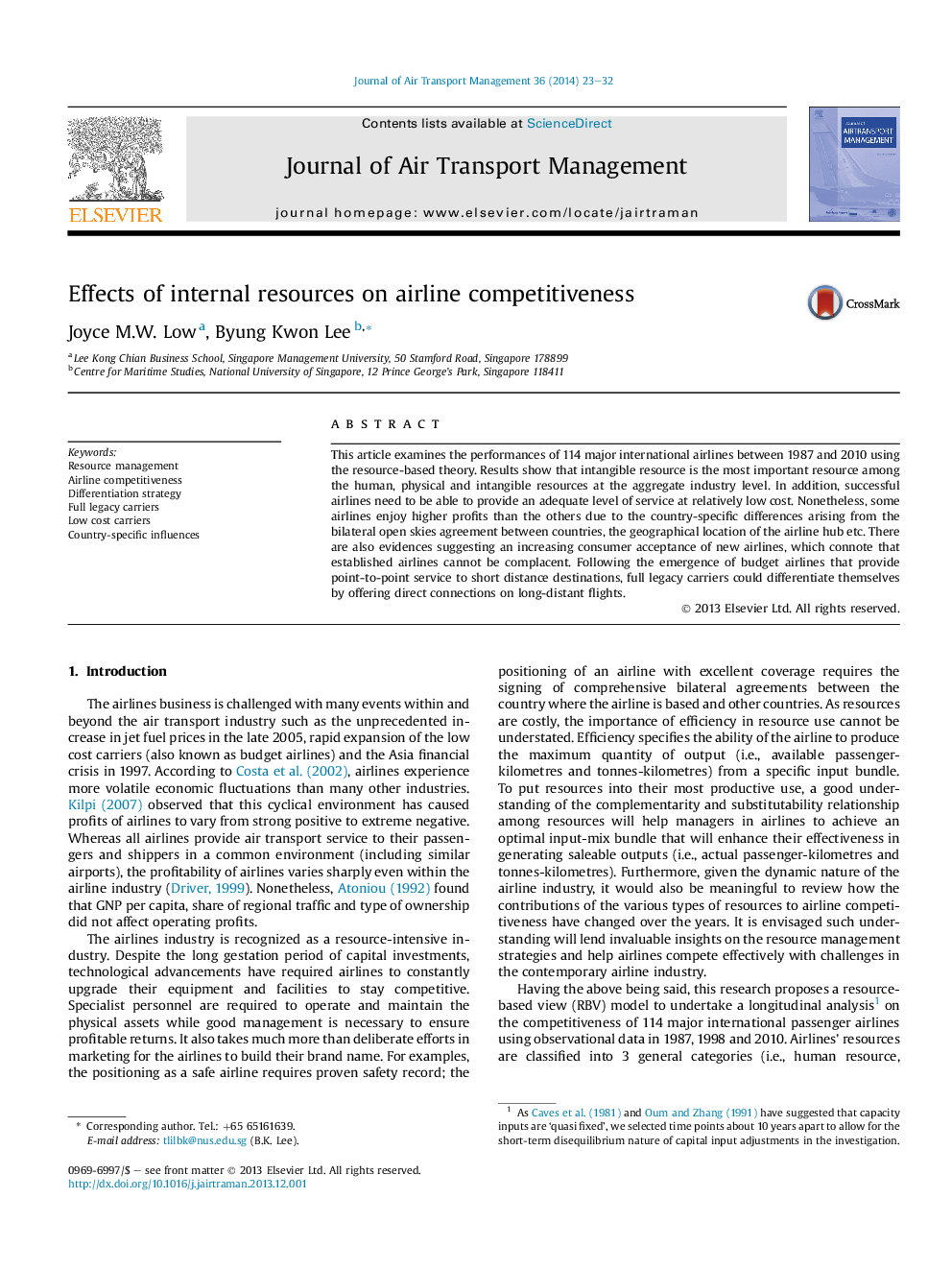| Article ID | Journal | Published Year | Pages | File Type |
|---|---|---|---|---|
| 7435871 | Journal of Air Transport Management | 2014 | 10 Pages |
Abstract
This article examines the performances of 114 major international airlines between 1987 and 2010 using the resource-based theory. Results show that intangible resource is the most important resource among the human, physical and intangible resources at the aggregate industry level. In addition, successful airlines need to be able to provide an adequate level of service at relatively low cost. Nonetheless, some airlines enjoy higher profits than the others due to the country-specific differences arising from the bilateral open skies agreement between countries, the geographical location of the airline hub etc. There are also evidences suggesting an increasing consumer acceptance of new airlines, which connote that established airlines cannot be complacent. Following the emergence of budget airlines that provide point-to-point service to short distance destinations, full legacy carriers could differentiate themselves by offering direct connections on long-distant flights.
Keywords
Related Topics
Social Sciences and Humanities
Business, Management and Accounting
Strategy and Management
Authors
Joyce M.W. Low, Byung Kwon Lee,
